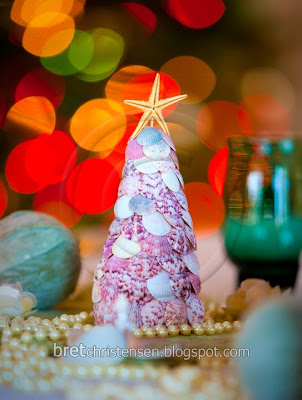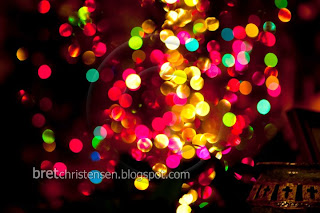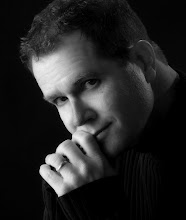
Here’s a quick tip to get a really cool background for your Christmas photos this year:
Use your Christmas tree.
Wow. Never done that before. I know, I know, if you’re like me all your childhood Christmas photos have you holding that really cool whats-it that Santa brought you, with you standing in front of… what else, the Christmas tree.
So here’s the twist: simply throw that evergreen beauty way out of focus and you’ll get that lovely, translucent orbs-of-light look that you see in the photo above. The subject matter here is the product of my wife's very creative crafting, a seashell Christmas tree topped with a starfish. Ok, that’s it, see you next time.
Well, alright, let’s make it a little more technical. You have to REALLY get that thing out of focus. Here’s how:
· Place your subject as far from your tree (or any other Christmas lights for that matter) as possible.
· Get as close as possible to your subject with your camera.
· Use the longest focal length lens you have, something at least as high as 100mm if you have it.
· Use the smallest f/stop your lens will allow, hopefully something approaching f2.8.
Now, you’ll have to experiment with your exposure to get your Christmas lights bright enough for the effect. For a starting point, try 800 ISO at 1/60 sec at f2.8
Just for demonstration purposes, the following 3 photos were all shot exactly the same (same distance, shutter speed, f/stop, lens, etc) with the exception of the focus. Each successive exposure below is more and more out of focus than the previous one.
So I hope this gives you a little inspiration for this the most inspiring season of the year! Blessings and peace to you, your loved ones and your enemies as well!



















